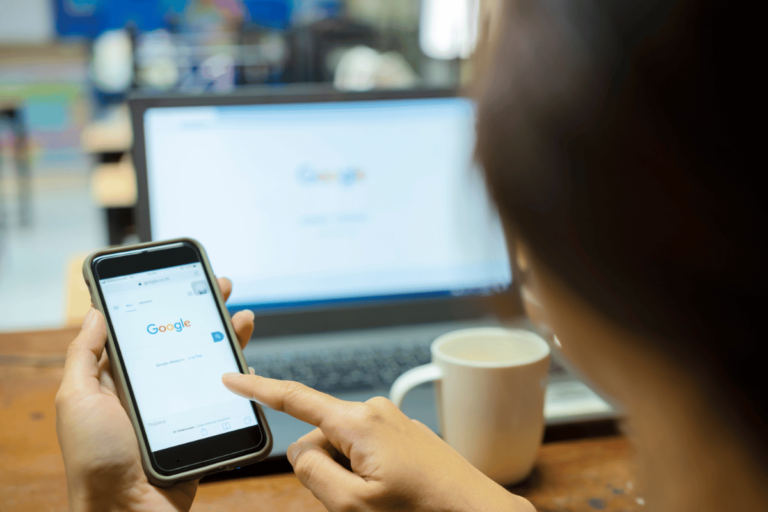Freemium Models in Digital Marketing: Strategies for conversion.
Did you know that using freemium models can cut customer costs by up to 50%? In today’s digital world, freemium pricing is a big win. Brands like LinkedIn and Dropbox use it to draw in and turn users into customers.
Offering a basic product for free lets businesses grow fast. It helps them get known and opens doors for selling more premium features. This way, freemium models are great for both new and big companies. They offer big benefits in a crowded market.
Key Takeaways
- Freemium models can drastically reduce customer acquisition costs.
- They enhance brand exposure and leverage word-of-mouth marketing for organic growth.
- Upselling premium features leads to increased sales opportunities.
- A free entry point provides a strategic advantage in competitive markets.
- Feedback from free users aids in product improvement and user alignment.
Introduction to Freemium Models
The freemium business model has changed how companies get and keep customers. It started in 2006 with the term coined by Jarid Lukin. This method offers basic services for free and extra features for a fee. It’s now a key strategy for getting and keeping customers in tech and digital marketing.
Definition and Origin
The freemium model began with internet business strategies in the early 2000s. Jarid Lukin of Alacra first used the term in 2006. The idea was simple: give away basic services to draw in users and then sell more features.
This approach first hit big in the software industry. Companies like Dropbox used it, letting users try basic cloud storage for free before paying for more.
Popularity Across Industries
The freemium model works well in many fields, like gaming, software, and online services. Many digital services use it today. For example, Spotify lets free users stream music with ads, while premium users get ad-free listening.
Dropbox offers basic storage for free, pushing users to pay for more space as they need it. Canva also uses this model, offering free design tools and making $40 billion in value by adding premium features.
This model helps attract lots of users and cuts down on costs to get new customers. Companies like Zoom saw a 326 percent revenue jump from March 2020 to March 2021. Even a small number of free users turning to paid can mean a lot of revenue. It also uses word-of-mouth to save on marketing costs.
But, this model has its downsides. Companies struggle to keep many free users, which can be costly. Yet, its fast growth and low marketing costs make it a popular choice for businesses.
How Freemium Models Work
The freemium model splits users into two groups: free and premium. Each group gets different features, making it a strong strategy in digital marketing. It offers enough free features to draw in many users. At the same time, it limits these features to make users want to pay for more.
This approach makes both free and paid users happy. Yet, it encourages more users to pay for extra benefits.
The Two-Tiered System
The freemium model has a two-tier system. Free users get basic features, giving them a taste of what the full product offers. But, there are limits to push some to pay for more. This is seen in companies like Spotify and Skype, offering different experiences to users.
Creating Value for Both Free and Paid Users
For a freemium strategy to work, the free version must be valuable. But, it should also have limits to make users want to pay. The difference between free and paid features is crucial. It affects how likely users are to pay more.
A good balance makes free users see the product’s value. This might lead them to the “aha moment.” This is when they decide to pay for more.
Examples of Successful Freemium Implementations
Many companies have found success with the freemium model. Spotify, for example, has 46% of free users paying for premium subscriptions. It draws users in with free music streaming. Then, premium features like ad-free listening and offline playback make them pay.
Evernote keeps free users interested with basic notes. But, premium users get more advanced options. Zoom has also grown big using the freemium model. It shows how effective digital marketing freemium strategies can be in real life.
Advantages of the Freemium Business Model
The freemium model has many benefits, making it popular in the digital world. It starts with no cost, drawing in users and helping to acquire customers at a low cost. This model combines a large user base with targeted marketing to expose the brand widely and engage customers.
Attracting a Large User Base
The freemium model quickly attracts a wide range of users. Zoom, for example, grew from 81,000 paying customers in January 2020 to 512,000 by the third quarter of 2022. This growth was driven by its free tier’s popularity. Spotify also uses this model, offering free music streaming to over 400 million users while premium users get extra features.
Cost-Effective Customer Acquisition
The freemium model is a cost-effective way to get new customers. MailChimp, for instance, lets users send 2,500 emails for free, encouraging businesses to pay as they grow. Companies like Dropbox limit free usage to push users to pay for more features. This approach cuts down on marketing costs while still offering valuable insights for future marketing.
Building Brand Awareness
Freemium marketing helps build brand awareness. Canva, for example, offers more features in its paid version, reaching a valuation of over $40 billion. Referral programs and engaging with the user community, like on GitHub, also boost visibility without big costs. Netflix is now offering an affordable, ad-supported subscription to win back users and make more money from ads.
Challenges and Limitations
The freemium model, used by Dropbox, Spotify, and Evernote, has many benefits. Yet, it also has challenges. It can be tough on a company’s resources because of the many non-paying users. These users still need support and upkeep.
It’s important to balance free and paid features for success. This ensures users get enough value from the free version. But, it also keeps them motivated to pay for more.
Many users don’t switch from free to paid plans. This means companies must try harder to make more money. For example, Spotify has 381 million users, but only 172 million pay. This shows how hard it is to get users to upgrade.
Offering too many free features can also stop users from paying. Companies must find the right balance. They need to give enough value for free but make the paid version worth it.
Zipline, a game development company, shows how this works. Some users play 100 times a month, making $10 to $20. This shows the power of a good freemium model in getting users to spend more.
Running a freemium model means always working to improve the balance between free and paid options. Using data from free trials helps businesses understand what customers want. This can lead to better marketing and more users paying.
But, remember, getting paying customers costs five times more than getting free ones. So, it’s crucial to use resources wisely. Finding the right balance can make a freemium model very successful.
Freemium Models in Digital Marketing
Freemium models are key in digital marketing. They mix free and paid options. By using smart strategies for conversion, companies can grow their user base and keep a good conversion rate.
Strategies for Conversion
Good freemium marketing needs clear strategies for turning users into paying customers. Spotify, Dropbox, and Slack show how this works well. They attract many users and get a lot of paid subscribers. To do this, businesses can:
- Give basic features for free and save special features for paid subscribers.
- Look at data from free users to see what they like.
- Use upselling tactics like special messages and limited-time deals.
Understanding Customer Needs
Knowing what customers want is crucial for better strategies for conversion. By looking at how free users act, companies can learn a lot. This helps them make their paid options more appealing. For example, Skype gives basic services for free but charges for more advanced features. This lets users see the value before paying.
Optimizing Conversion Rates
Getting more users to pay is key for freemium models. The usual conversion rate is between 2% to 5%. Spotify is great at this, with a 46% conversion rate. To do well, businesses should:
- Use detailed analytics to see how users use free and paid features.
- Give trial periods so users can try premium features before deciding.
- Keep adding new things to the paid tier to keep users interested.
Freemium models help attract many users and turn some into paying customers. By focusing on smart freemium marketing tactics and improving conversion rates, companies can grow a strong and lasting user base.
Freemium vs. Free Trials
Freemium and free trial models are two ways to turn users into paying customers in digital marketing. They are different in how they work and affect conversion rates.
The freemium business model and free trials differ in how long users can access the product and what features they get. Freemium offers a basic version for free forever, drawing users in with its long-term use. Free trials, however, give full access to premium features but only for a short time, usually 7, 14, or 30 days. Users must decide to buy after the trial ends.
Key Differences
- Access Duration: Freemium has no time limit, while free trials last for a set time.
- Feature Availability: Freemium limits some features to encourage upgrades, but free trials offer full access during the trial.
- User Preference: Many like free trials because they don’t need to give credit card info, making it easier to try out.
Conversion Rate Comparison
Conversion rates differ between freemium and free trials. Free trials often see higher rates, up to 50%, as users fully experience the product. Freemium usually gets 2-5% conversion but reaches more users. For example, Vidyard’s freemium Chrome extension got over 100,000 users in a year, showing how freemium can grow a user base through mouth marketing.
Choosing between freemium and free trials depends on your audience, costs, and market conditions. Both have their benefits and can fit into a freemium business model or a customer strategy. Knowing their differences is key to success.
Implementing a Successful Freemium Strategy
Creating a successful freemium strategy takes careful planning and action. Companies must decide on features for each user level. They should also look at what makes other freemium models work.
Choosing Features for Different Tiers
A good freemium strategy means dividing features to draw in both free and paying users. Free features should give users real value. Paid features should meet the needs of those who want more to encourage them to pay.
For example, Dropbox gives free users 2GB of storage. But, users needing more space are encouraged to pay for more.
Identifying Upgrade Triggers
To get free users to pay, companies must know when to ask for an upgrade. These moments can be when users hit certain limits or need more advanced features. Knowing when to suggest an upgrade is key to a successful freemium strategy.
Case Studies of Successful Freemium Strategies
Looking at successful freemium models shows how well it can work. Spotify uses the freemium model to draw in users with free features. It then encourages them to pay for a premium plan for ad-free listening and offline playback.
Dropbox offers a valuable free service to get users in. As users need more storage, they are guided towards premium plans.
Studying these examples gives businesses insights from leaders in the field. Spotify and Dropbox show how offering both free and premium options builds loyalty and makes upgrading easy.
Tactics to Increase Conversion from Free to Premium
Turning free users into premium subscribers is key. It starts with smart freemium marketing tactics. Making things personal, adding value, and great customer support are key. Let’s look at some ways to boost increasing conversion rates from free to premium.
Personalized Marketing Techniques
Personalized marketing is vital for better user engagement and value. Tailored content and targeted promotions make the experience better. For example, knowing when users get the most from your product can help increase conversions. Companies like Dropbox use prompts to remind users why upgrading is a good idea, turning more users into subscribers.
Offering Value Beyond the Product
Adding extra value to your premium tier makes it more tempting. Things like exclusive webinars or a special community can make users want more. Capturly offers tools and insights that improve website performance, making the premium option more appealing.
Customer Education and Support
Great customer support and education build trust and show why premium is better. Users who understand the benefits of upgrading are more likely to pay for it. Google provides lots of resources to help users get the most from their free version, showing why premium is worth it. Clear calls to action also help users easily move to premium.
Success in converting users comes from using these freemium marketing tactics well. They improve the user experience and show why premium is a better choice.
Source Links
- Using the freemium model for business growth | DigitalOcean
- Tips for Implementing a Freemium Model | Mailchimp
- Freemium: Its Business Model, Explained (With Examples) | Built In
- The Ultimate Guide to Freemium
- Freemium Business Model: Why It Works and How to Do It Right
- Making Freemium Models Work
- Freemium Business Model: A Guide for Subscription-Based Companies
- 5 Epic Advantages of Freemium (And 3 Roadblocks)
- Pros and Cons of the Freemium Business Model
- The Pros And Cons Of Freemium Business Model
- Unlocking Success with Freemium Marketing Strategy
- Freemium: Definition, Examples, and Pros & Cons for Business
- How to Grow Revenue With the Freemium Business Model
- Freemium vs Free Trial Compared – Pros, Cons, What to Choose
- Freemium vs. Free Trial? A decision framework to help you decide | ProductLed
- Freemium Strategy 101: Ultimate Guide for SaaS Companies [+ Examples]
- The Art of Upgrading: Strategies for Freemium Success
- How to Increase Freemium Conversion Rate for SaaS Businesses
- How to Convert Free Trial Users to Paying Customers







